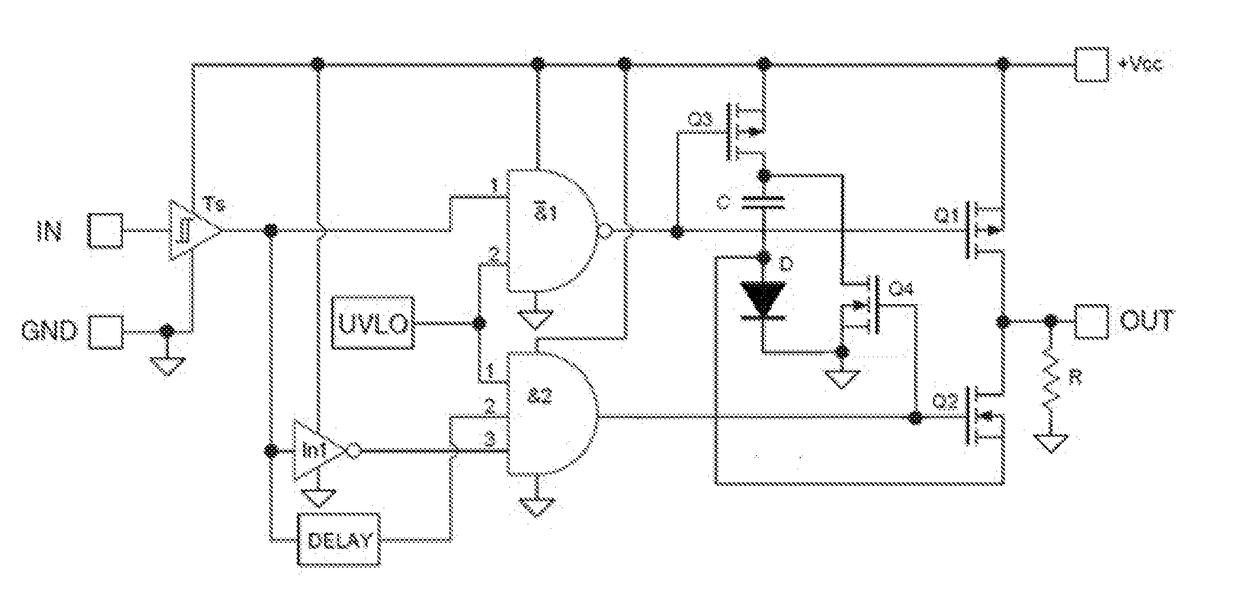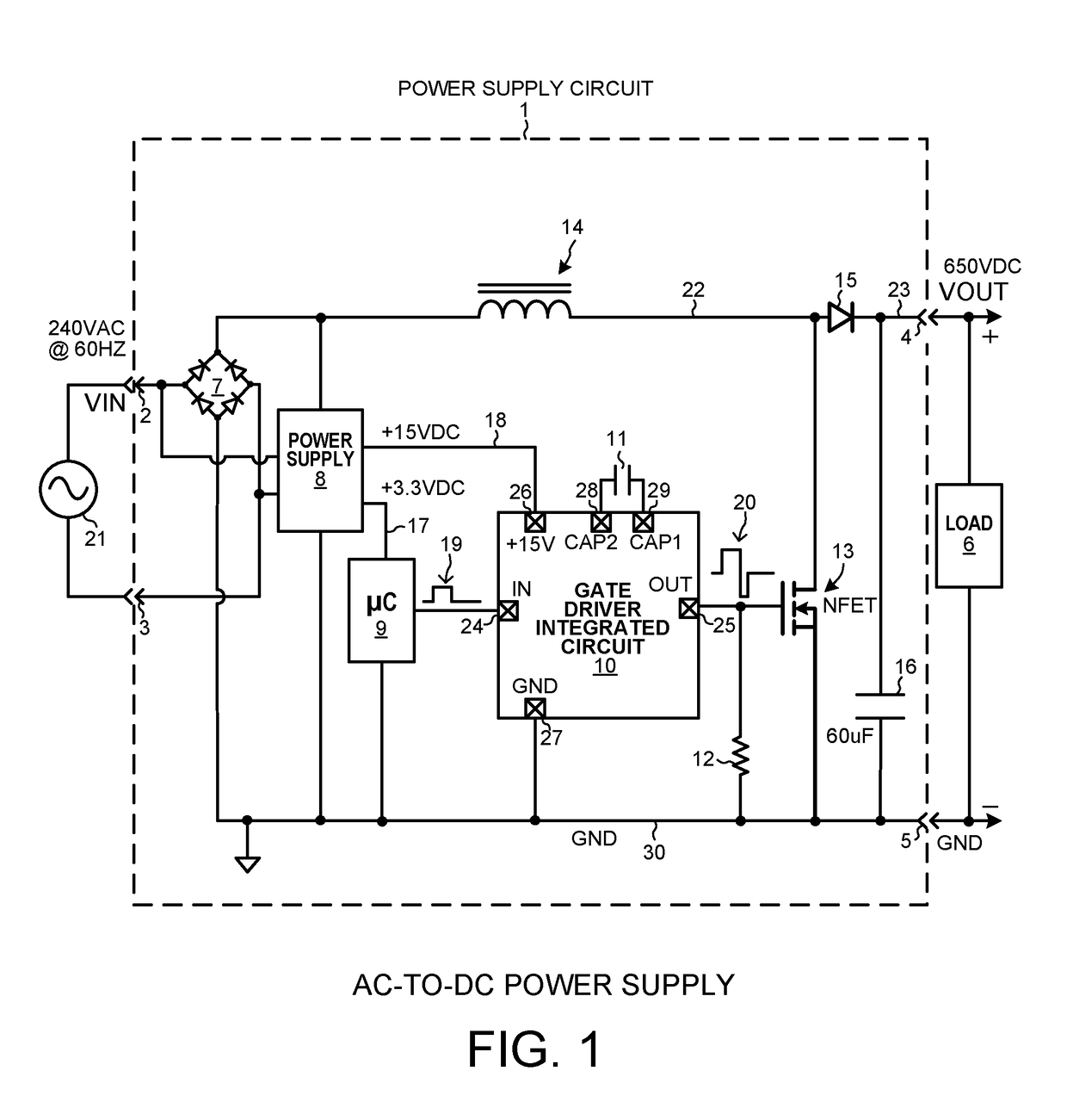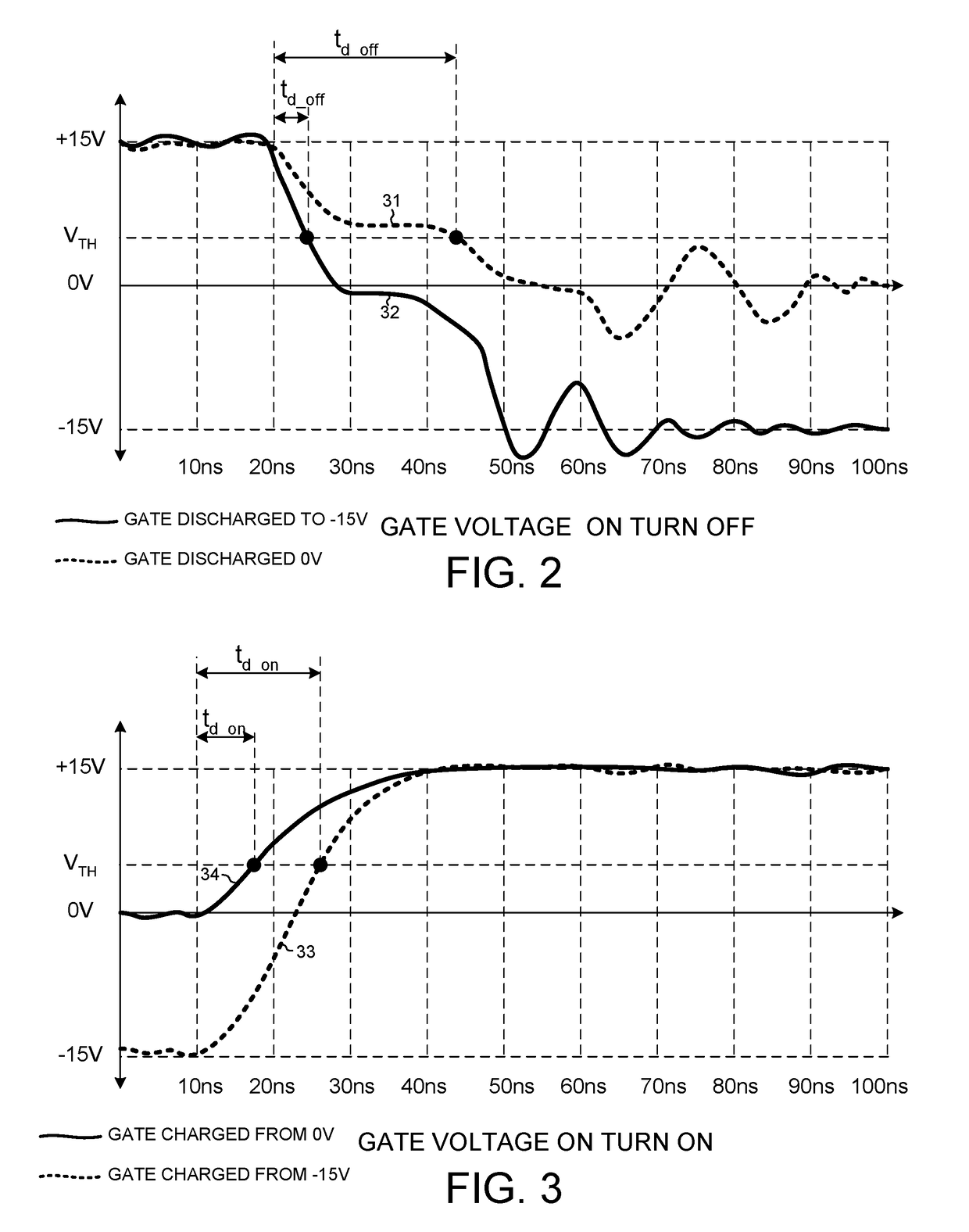High-Speed MOSFET and IGBT Gate Driver
a gate driver and high-speed technology, applied in the field of high-speed gate drivers, can solve the problems of increasing the cost of another part of the circuit, reducing the cost in certain respects, and often remaining undetected high cos
- Summary
- Abstract
- Description
- Claims
- Application Information
AI Technical Summary
Benefits of technology
Problems solved by technology
Method used
Image
Examples
second embodiment
[0055]FIG. 9 is a circuit diagram of a gate driver integrated circuit. This embodiment has a negative supply voltage terminal (labeled −Vcc in the diagram) and employs passive charging to ground potential. This is a terminal of the gate driver integrated circuit. There is no active grounding circuit, but rather in the third period of time the output terminal OUT (and on the gate of the NFET being driven) is charged from the negative supply voltage up to ground potential via resistor R. The voltage on the gate of the NFET is raised up to ground potential at the beginning of the third period of time with an RC circuit waveform as determined by the resistance of the resistor R and the capacitance of the gate of the NFET. The resistor R can be provided on-chip as illustrated, or can be provided external to the gate driver integrated circuit.
[0056]FIG. 10 is a circuit diagram of a third embodiment of a gate driver integrated circuit. This embodiment also has a negative supply voltage ter...
fourth embodiment
[0057]FIG. 11 is a circuit diagram of a gate driver integrated circuit. This embodiment does not have and does not need a negative supply voltage terminal −VCC. Rather, a capacitor C is used in a charge pump fashion to generate the necessary negative voltage on-chip. The capacitor C can be provided on-chip, or can be provided off chip by providing two capacitor connection terminals CAP1 and CAP2 as shown in FIG. 2. The embodiment of FIG. 11 does not have an active grounding circuit. Rather, the grounding of the gate of the NFET to ground potential during the third period of time is performed by the resistor R. The resistor R can be provided on-chip as illustrated, or can be provided external to the gate driver integrated circuit.
[0058]FIG. 12 is a circuit diagram of a level shifter circuit suitable for use as the level shifter circuit in the embodiment of FIG. 9 and in the embodiment of FIG. 10. The +15V terminal is not really a terminal, but rather denotes a connection to a conduct...
PUM
 Login to View More
Login to View More Abstract
Description
Claims
Application Information
 Login to View More
Login to View More - R&D Engineer
- R&D Manager
- IP Professional
- Industry Leading Data Capabilities
- Powerful AI technology
- Patent DNA Extraction
Browse by: Latest US Patents, China's latest patents, Technical Efficacy Thesaurus, Application Domain, Technology Topic, Popular Technical Reports.
© 2024 PatSnap. All rights reserved.Legal|Privacy policy|Modern Slavery Act Transparency Statement|Sitemap|About US| Contact US: help@patsnap.com










